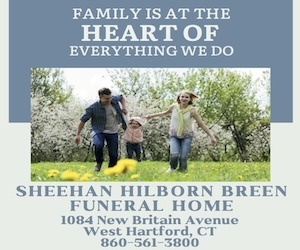
From Temple times through today, Passover conveys message of Jewish unity
By Maayan Jaffe/JNS.org
Between 19 BCE and 4 BCE, King Herod I renovated the Jewish Temple in Jerusalem, enlarging and beautifying it. It is during this same period that we first learn of the Jewish pilgrimages to Jerusalem on what are known as the shalosh regalim, “the three pilgrimage festivals.”
All of the festivals – Passover, Shavuot, and Sukkot – center around the story of the Exodus in some way. But Passover is the first and foremost of the bunch.
Jerusalem always held a special place in the hearts of the Jewish people, but as the Romans built roads and as Herod expanded the Temple, the pilgrimage to Jerusalem became commonplace and served as a message of unity – “one Temple, one God, on Passover” – for all of the Jews, said Prof. Jonathan Klawans of Boston University’s Department of Religion.
Yet detailed writings about what the pilgrimage festivals may have looked like during Temple times don’t exist. According to Talmudic scholar Dr. Joshua Kulp, author of Schechter Haggadah: Art, History and Commentary, most knowledge on the subject comes from the works of the ancient historian Josephus. While later writings (such as the New Testament) describe what it was like in Jerusalem during the Second Temple era, those works were written at a much later time and some scholars doubt their accuracy.
It isn’t known where people stayed or slept when they were in Jerusalem, or how many people were there (though most assume a large number), or what people felt at that time. What is known, Klawans told JNS.org, is that the pilgrimages were a social experience that pulled the Jewish people together.
It’s also clear that for Passover, pilgrimage participants ate in Jerusalem as family units. A representative from each family would take an animal, bring it up to the Temple, and have it slaughtered. Then, the representative would bring the animal back, and the family would cook and eat the sacrificial meat. During this festive meal, families also drank wine, but not a specific number of glasses. They sang songs—specifically, the Hallel prayer, which is also part of the modern Passover seder.
“There may have been discussion [at the Passover pilgrimage meals] about leaving Egypt, and we cannot prove that they didn’t talk about it, but none of the Second Temple descriptions say that they did,” Kulp told JNS.org.
According to scholars, the Passover seder as we know it today was developed between the destruction of the Temple (70 CE) and the end of rabbinic period (1000 CE).
“The seder we have today is an organized meal with instructions,” said Kulp. “The seder tells us how many cups of wine and when to drink them. It tells us when to wash our hands, to say blessings. There is even a ritualized way of telling the Passover story.”
But exactly how much of the contemporary seder relates to the pilgrimage meals? Klawans said it isn’t so much that the formulaic seder aligns to the pilgrimage and sacrifice, but rather, that the perception of that connection is the key to understanding Passover.

A model of King Herod I’s renovated version of the Second Jewish Temple in Jerusalem. Credit: Ariely via Wikimedia Commons.
“Is having a seder like going to the Temple? There are obvious differences. But the perception of continuity really drives people,” he said. “Jews today in Pennsylvania or Boston or Jerusalem are experiencing — are holding — seders at the same time and in basically the same way, and that is significant for us.”
Tova Hametz, who lives in the Old City of Jerusalem, echoed Klawans’s sentiment, but added that she believes a deep unity can be felt to this day in Jerusalem, which she called “the epicenter of the universe.”
“It is the holiest place,” she told JNS.org. “We are in Hashem’s [God’s] backyard. Now that all the Jews are scattered in exile, we sometimes forget about belonging here [in Jerusalem], where you still can experience the inspiration and community consciousness of being together in celebration.”
Hametz lives on a narrow street, about six feet wide, which passersby need to navigate to reach the Kotel (Western Wall) from the Jaffa Gate. On Passover, thousands of people walk down her street.
“I open my door and I can sit on the front steps with my daughter and watch as they flood down the street,” she said. “And it is not for an hour or two, it is all hours of the day and night. They come in masses – some running, some walking. Every kind of person you can imagine. Every variety of dress. Every size and background and color.”
While Hametz said she can only try to imagine what it must have been like when the Temple existed in all its greatness, she focuses on living in the place where the next Temple could be built at any moment. And on Passover, as the throngs of rowdy people keep her up in awe, she tries to remain conscious of what it means to be a Jew.
Hametz said, “Seeing the experience of everyone coming here, to the Kotel, together—that is what it means to be in Israel, to be a Jew, to be a part of the whole.”
Maayan Jaffe is senior/writer editor at Netsmart and a freelance writer in Overland Park, Kan. Reach her at jaffemaayan@gmail.com or follow her on Twitter, @MaayanJaffe.
A Haggadah Insert that “Breaks the Hate”
WOODBRIDGE — This Passover, the Jewish Federation of Greater New Haven is distributing a new Haggadah insert for use at the Seder. The insert, entitled “Maggid” or “Tell the Story,” invites discussion around the Seder table about how the freedom of speech we enjoy as Americans empowers us to express our Jewish identity and our love for Israel.
Related to this issue, the insert also promotes an upcoming program, “The New Anti-Semitism on College Campus,” with keynote speaker Ken Marcus that will be held on Sunday, April 12 at the JCC of Greater New Haven in Woodbridge.
The insert begins with how we use our gift of speech for the telling of the Passover story: “The very word Pesach is a contraction derived from the two Hebrew words Peh Sach, meaning, ‘the mouth speaks.’ In contrast, the Hebrew name for Pharaoh, Par-oh, is a combination of Peh Rah, meaning ‘the bad mouth.’ For just as speech has the power to build, it also has the power to destroy.”
The insert then points out that there is a fine line between freedom of speech and hateful speech and how in the last year, college campuses have crossed that line. The new antisemitism on campus, consisting of anti-Israel rhetoric, physical attacks, bullying, and graffiti, has increased dramatically as reported by the recently released “National Demographic Survey of American Jewish College Students Anti-Semitism Report” by Trinity College.
The Haggadah insert highlights how on seder night, as we gather to share historical, personal, and communal stories of the struggle for freedom in our own lives, we can empower our children with the freedom to speak out. In particular, it emphasizes how important it is to prepare our high school students and support our college students to use that freedom to speak out while on campus.
As part of that effort, the Haggadah insert invites the community to bring their questions about the new antisemitism to a special program with speaker Ken Marcus whose keynote. “Break the Hate: Responding to Anti-Semitism on Campus,” will address the issue. Following the keynote, high school students are invited for pizza, s’mores and a series of speed-stations to speak with current college students about their personal campus experiences and to learn strategies for responding to antisemitism.
The event is free, but space is limited. RSVP to Hilary Goldberg at (203) 389-2424, ext. 325 or hgoldberg@jewishnewhaven.org.
The Haggadah insert can be downloaded and printed for personal use at www.jewishnewhaven.org (click on “Break the Hate: Responding to Anti-Semitism on Campus.”
Seder 2015 brings Passover into the digital age
By Gabriel Friedman/JTA
 An appreciation for classics and architecture does not necessarily foster interest in the Passover seder.
An appreciation for classics and architecture does not necessarily foster interest in the Passover seder.
However, those interests are what have led Michael Hebb, a former restaurateur and the founder of meal-related projects such as Death Over Dinner and Drugs Over Dinner, to adapt Passover to the digital age.
Hebb’s latest project, Seder2015.org, is a multimedia Passover resource – it contains Passover recipes (from well-known cooks like “Top Chef” contestant Spike Mendelsohn), recorded anecdotes about the holiday meant to play at the seder table (including one by Susannah Heschel on the night Martin Luther King, Jr., came to her Passover seder), holiday-appropriate playlists compiled by Jewish indie musicians, and more. The site has also partnered with Haggadot.com, an existing online repository of community-generated Haggadah materials, to provide further digital resources.
This initial year is a bit of an experiment, and Hebb says that all the site’s various media libraries will expand after this spring for the years to come. Nevertheless, the goal is to inspire young Jews – and non-Jews – to take part in the unique millennia-old dinner ritual that Hebb says offers almost unparalleled opportunity to foster meaningful discussion. He imagines younger seder attendees playing the Heschel anecdote on their smartphones or streaming the Passover playlists on Spotify.
“The millennials and Gen Y and the generations that are to come tell their stories on their digital devices,” Hebb said. “And the fact is, if you go online to look for resources for Passover, you’re going to be pretty disappointed.”
Hebb, 39, is an unofficial expert on the dinner table. After studying architecture at Portland State University and classics at Reed College, 21-year-old Hebb started the firm Communitexture with fellow architect Mark Lakeman. Together, they created the City Repair Project, which brought Portlanders together in public places that Hebb and Lakeman converted into tea houses and other gathering spaces.
As Hebb explained, some of their more daring ideas — such as drawing concentric circles on the streets of Portland and hosting discussions there — got them in trouble with “a lot of angry bureaucrats.”
It was around this time that Hebb began hosting his own seders and “working with a wide array of Portland artists and musicians to create experimental Haggadot.”
“My interest in the Greek symposium and the seder and architecture all came together,” he said.
Nearly two decades later, after stints owning several chic restaurants in Portland, Hebb started Death Over Dinner, a project that provides guidelines to help users hold discussions about mortality with family and friends at the dinner table. The idea struck a chord, and tens of thousands of people since 2013 have reportedly attended dinners planned with Hebb’s resources. It inspired Hebb to create Drugs Over Dinner, which helps people host candid discussions about drug abuse.
However, taking on the Passover seder remained an epic and tempting feat for Hebb. When talking about Death Over Dinner and Drugs Over Dinner, he says that “in some ways those projects are secretly seders.”
“We can talk about the importance of the Greek symposium, and yet it hasn’t existed since the classical period,” Hebb said. “It was defined by a very small period of history. And then you look at the seder and how it has helped keep a community of faith together for millennia — it’s pretty remarkable.”
That doesn’t mean that the seder is invincible. In fact, Hebb worries that declining seder attendance among young Jews, which the 2013 Pew study documented, will continue or even worsen if Jews don’t experiment with ways to engage young people.
“If we don’t start creating meaningful reasons for them to be at that table, then they’re not going to show up,” he said.
For assistance, please email help@jta.org.








 Southern New England Jewish Ledger
Southern New England Jewish Ledger









